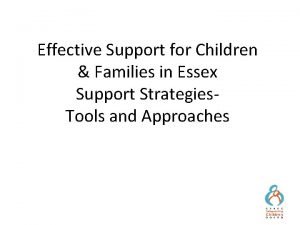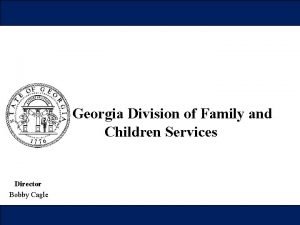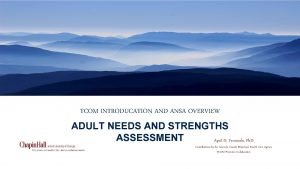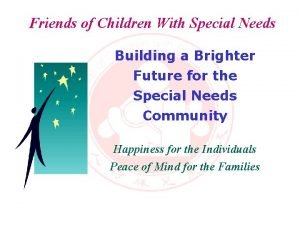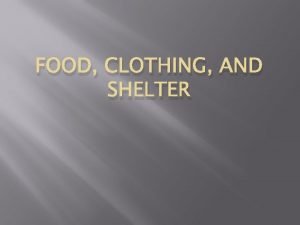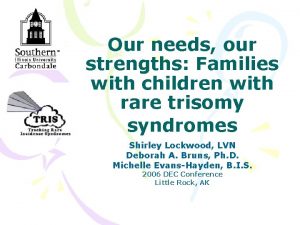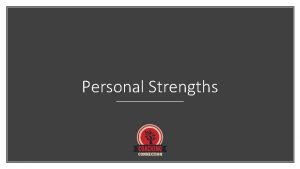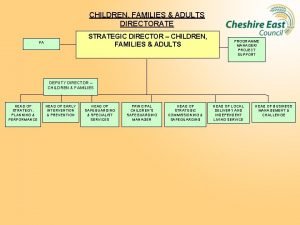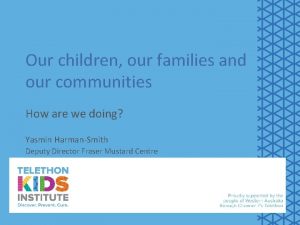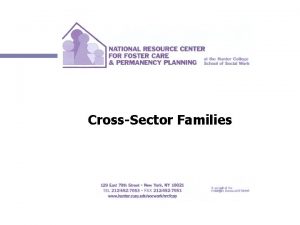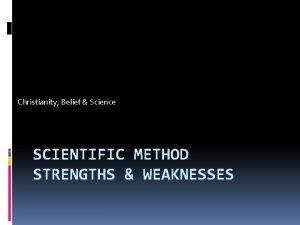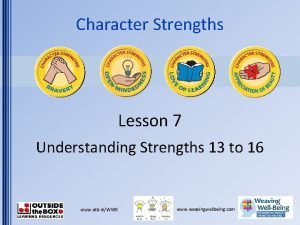Our needs our strengths Families with children with
















- Slides: 16

Our needs, our strengths: Families with children with rare trisomy syndromes Shirley Lockwood, LVN Deborah A. Bruns, Ph. D. Michelle Evans-Hayden, B. I. S. 2006 DEC Conference Little Rock, AK

Purpose of TRIS project The TRIS project seeks to increase the knowledge base on rare incidence trisomy conditions and to make this information available to families and interested educational, medical and therapeutic professionals. http: //web. coehs. siu. edu/Grants/TRIS/pdfs/ TRIS_informational_flyer_2005_May. pdf

TRIS PILOT SURVEY • Development of pilot materials – Part I: Pregnancy and birth – Part II: Services and supports – Part III: Family issues • Feedback from TRIS Advisory Committee on content and presentation • Development of Interested Parents Database • Distribute materials to parents in PDF format, fillable Word, and by snail mail

TRIS PILOT SURVEY continued • Packets included: – Cover letter – Parts I, II and III and comment forms – Return envelope for snail mail • Data collection: March – June 2006 – – Postal mailing (8) & electronic mailing (32) Additional mailings (26) Receive first surveys – snail mail & electronic Closed survey in early June • Total interested = 80; total sent = 66 • Total TRIS Pilot Surveys received=27 (41%) 3 excluded for analysis=24 (36%)

TRIS PILOT SURVEY Part I RESULTS • Complete data available for 19 respondents (79%) – 46% parents of children with Trisomy 18 (11 total: 9 full, 1 mosaic, 1 partial); 54% parents of children with Trisomy 13 (13 total: 10 full, 2 mosaic, 1 partial) – Education level: H. S. graduate (N = 5, 26%) to advanced degree (N = 5, 26%) – 19 (100%) reported being married and 16 (84%) earning $50, 000 or more in annual household income

TRIS PILOT SURVEY Part I RESULTS continued • Pregnancy data: – Trisomy child was 1 st child for 36% of parents (N = 8) – Pregnancy age = 22 to 43 years – 9% of parents (N = 2) were aware of rare trisomy syndromes – 8 of 22 children’s trisomy condition was detected prenatally (36%) including ultrasound or sonogram (6; 75%), amniocentesis (7; 88%) or Alpha Fetal Protein test (4; 50%) – Seven mothers (88%) met with a geneticist – Trisomy condition confirmed between 19 – 36 weeks of pregnancy

TRIS PILOT SURVEY Part I RESULTS continued • Gestational age: 29 -41 weeks (M = 37. 7 weeks) • Gestation weight: 1021 -3629 grams (M = 2610) [one ounce = 28 grams] • Gestational length: 14 -20. 5 inches (M = 18. 3) • Gender: 11 girls and 13 boys • At time of survey completion: 11 living (46%) and 13 angels (54%)

TRIS PILOT SURVEY Part I RESULTS continued • Common physical characteristics – Low set ears (16 of 20; 80%) – Small jaw (8 of 20; 40%) – Microcephaly (9 of 20; 45%) – Extra finger or toe (10 of 20; 50%) – Cleft lip and/or palate – Hernia

TRIS PILOT SURVEY Part I RESULTS continued • Common medical issues – Respiratory distress (15 of 20; 75%) – Feeding difficulties (15 of 20; 75%) – Kidney problems (6 of 20; 30%) – Heart defect: • ASD = 30% • PDA = 25% • VSD = 40%

TRIS PILOT SURVEY Part II RESULTS • Services and supports – Early intervention including service coordination • Home & Center-based developmental therapy • Physical therapy • Occupational therapy • Speech & language therapy • Vision services • Audiology services – Respite – Specialized equipment including feeding pump, adapted stroller/wheelchair and nebulizer

TRIS PILOT SURVEY Part II RESULTS continued • Additional needs – Oxygen / Apnea monitor – Medication • Heart problems • Seizure disorder • Gastrointestinal difficulties – Hearing aids / Glasses – Splints / Orthotics

TRIS PILOT SURVEY Part III RESULTS • Spouse identified as most supportive immediate family member: – “He walked the journey of carrying a dying baby to term and losing a much loved daughter. ” – “He's the most capable of helping. ” – “He is [name]'s father and we support each other. ”

TRIS PILOT SURVEY Part III RESULTS continued • Maternal grandmother identified as most supportive extended family member: – “She is always there to talk to. ” – “She was here for [her] birth, stayed to help, will keep her overnight. Has a way with her. She mourned the diagnosis with us and would be here in a flash if we needed her. ” – “She has come and stayed with us and helped with the care of the family and child. She also helps as a sounding board to issues that come up. ”

TRIS PILOT SURVEY Part III RESULTS continued • Friends and co-workers provided support but: – “…Since he died, they didn’t know what to say so they said nothing. That was and is very painful. ” – “No one really knows what to say and although they tried they either tried to convince me that ‘he’d be ok’ or they offered prayers. ” • Unmet needs include: – – Emotional such as need for counseling Financial such as funds for equipment Sibling relationships Spiritual needs

What’s next for TRIS? ? • Revision of TRIS Survey • Outreach efforts and continue to add names to database including other rare trisomy “flavors” • Upload revised TRIS Survey to website to collect and download data • TRIS interviews • Secure toll free phone number • Continue to submit conference proposals • Prepare informational materials including TRIS brochure, flyers, newsletter articles and manuscripts for education, family and medical related journals and publications

For more information about the TRIS Project Email: TRIS@siu. edu Website: http: //web. coehs. siu. edu/Grants/TRIS/ Deborah Bruns, Principal Investigator Southern Illinois University Carbondale Shirley Lockwood, Research Coordinator
 Big families vs small families
Big families vs small families Effective support for children and families in essex
Effective support for children and families in essex Georgia department of children and families
Georgia department of children and families The needs of families and suitability for the local
The needs of families and suitability for the local Adult needs and strengths assessment
Adult needs and strengths assessment Unit 18 assessing children's development support needs
Unit 18 assessing children's development support needs Friends of children with special needs
Friends of children with special needs Satisfaction
Satisfaction Alpha press murray
Alpha press murray Strategic gender needs and practical gender needs
Strategic gender needs and practical gender needs Primary needs and secondary needs
Primary needs and secondary needs What is target needs
What is target needs Ja our families
Ja our families Satisfying needs 1-4
Satisfying needs 1-4 Food, clothing and shelter
Food, clothing and shelter Awareness of ourselves and our environment
Awareness of ourselves and our environment Our census our future
Our census our future

